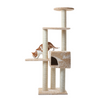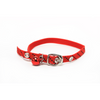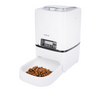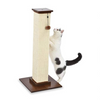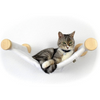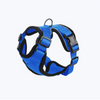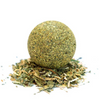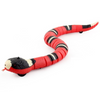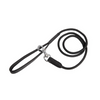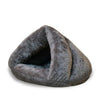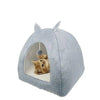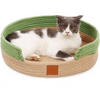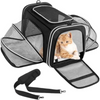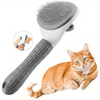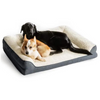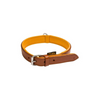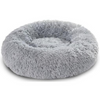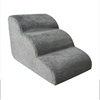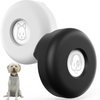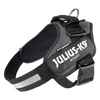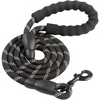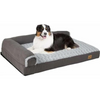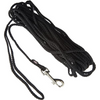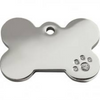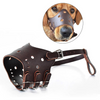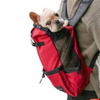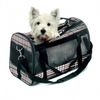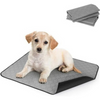Leash walking is an essential activity for your dog's physical and mental health. It provides an opportunity for socialization, exercise and mental stimulation. However, to make this experience enjoyable and safe for you and your four-legged friend, it is important to know the best methods for walking a dog on a leash.
In this article, we'll explore the key steps to a successful walk with your dog.
Step 1: Choose the right leash and collar
Choosing the right leash and collar is the first important step to a successful walk. There are several types of leashes and collars you can choose from depending on your dog's needs and temperament.
- Classic Leashes : Nylon leashes are lightweight and affordable, while leather leashes are durable and stylish. Choose the length of the leash based on the size of your dog and the space you will be walking.
- Collars : There are different types of collars, including buckle collars, martingale collars, harnesses, and choke collars. The choice of collar depends on the sensitivity and behavior of your dog. Consult a veterinarian or dog trainer to determine the best collar for your dog.
Step 2: Leash Training
Before you go for a walk, your dog should be familiar with the feel of the leash. Here's how to do it:
- Bring the leash indoors : Attach the leash to your dog's collar and let him drag it inside for short periods of time. This allows your dog to get used to the feel of the leash without the pressure of walking.
- Positive reinforcement : Reward your dog every time he ignores the leash or touches it with his nose. Use treats or praise to reinforce this behavior.
- Walking on a leash indoors : Start walking indoors with your dog on a leash. Reward him when the leash remains relaxed. If the leash becomes tight, stop and wait for your dog to relax before continuing.
Step 3: Walking on a leash outside
When your dog is comfortable on the leash indoors, it's time to move on to leash walking outside. Here are some tips for a smooth transition:
- Choose a quiet location : For the first leash outings, choose a quiet, uncrowded location to minimize distractions.
- Stay relaxed : Hold the leash so that it remains relaxed. If you are tense, your dog will feel it.
- Rewards and redirection : Reward your dog when he walks beside you without pulling on the leash. Also use redirection by changing direction if your dog starts pulling.
- Patience : Be patient. Walking on a leash can take time to master. Don't be discouraged if your dog pulls at first.
Step 4: Socializing and Distractions
Leash walking is also an opportunity to socialize your dog with other animals, people and different environments. Here are some tips for handling these situations:
- Gradual socialization : Expose your dog to new experiences gradually. Don't force him to interact if he shows signs of fear or anxiety.
- Controlled encounters : When meeting other dogs on leash, ask permission from the other dog's owner before allowing the interaction.
- Distractions : Learn to deal with distractions such as bikes, cars or wild animals. Use commands like "foot" to maintain control.
Step 5: Respect your dog's pace
Every dog is different, and it is important to respect your companion's rhythm. Some breeds need more exercise than others, while some prefer shorter, leisurely walks. Observe your dog's behavior to know if he is tired or needs more exercise.
Walking a dog on a leash: outings for two
Leash walking is an important activity for your dog's health and well-being. By choosing the right equipment, carrying out progressive leash training, managing social situations and respecting your dog's pace, you can ensure that your walks are enjoyable and beneficial for both of you.
With patience, consistency and love, you can enjoy unforgettable moments in the company of your faithful four-legged friend during your leash walks.





